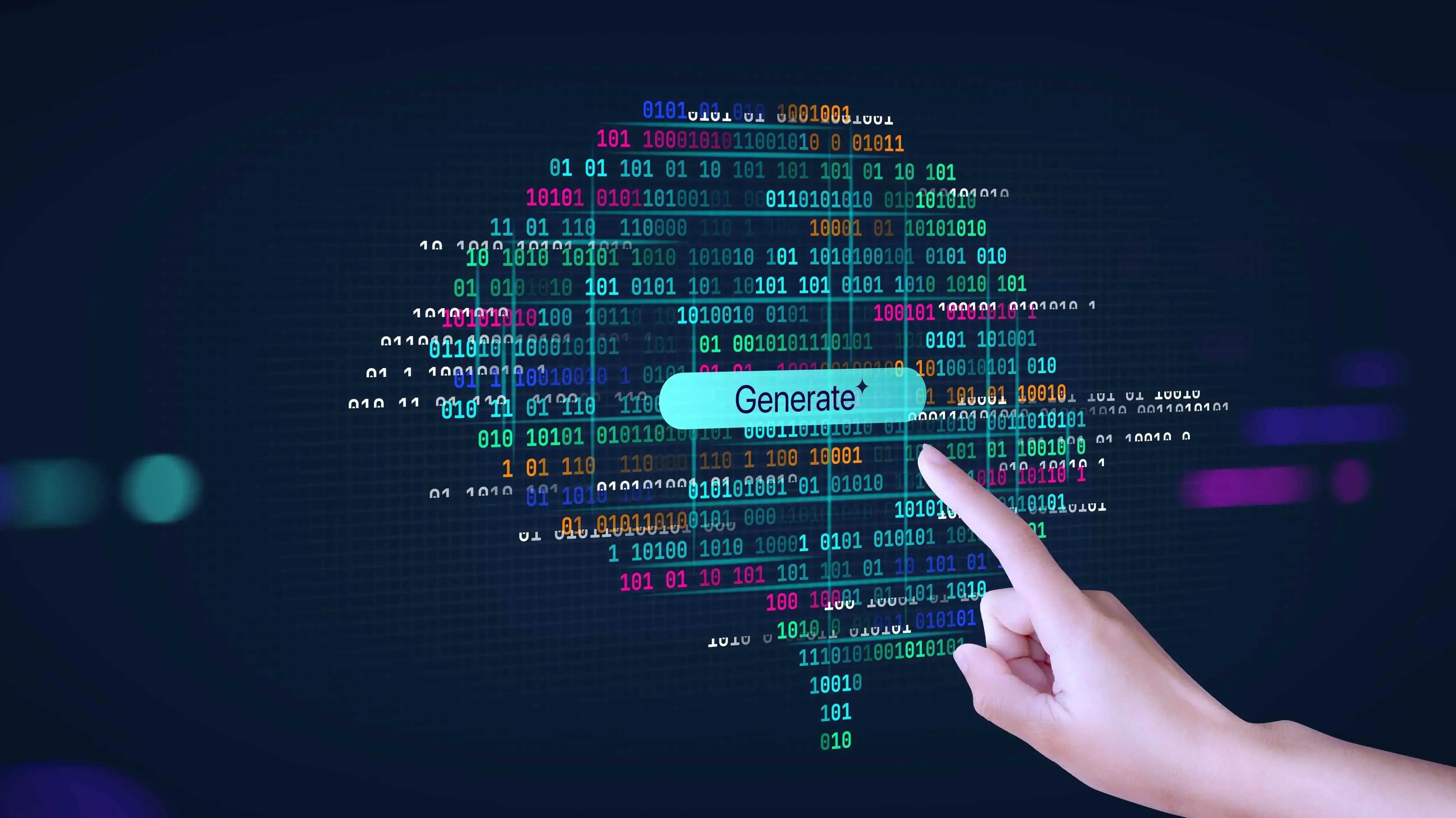Language models are at an all-time high in terms of usage; almost everyone on the internet has likely interacted with one or two.
OpenAI's Chief Operating Officer, Brad Lightcap, mentioned in a statement that ChatGPT (a chatbot that uses a large language model) has about 500 million weekly users. People have referred to it as their assistant, tutor, friend, and more because its human-like, intelligent, accurate, and fast responses.
Aside from ChatGPT, there are many other examples of language models. This article will discuss language models and the difference between large and small language models.
What is a Language Model?
A language model is a type of artificial intelligence that falls under deep learning. It is trained on large datasets to recognize patterns and generate human-like language. Think of it as a system with strong mimicking abilities and an impressive memory.
It is driven by randomness and prediction, and is trained using neural networks. Language models enable communication and collaboration between humans and machines, offering benefits such as:
- Content generation
- Code generation and debugging
- Text summarization
- Education and tutoring
- Data analysis and insights
- Automation of repetitive tasks
- Efficient search results
There are different classifications of LMs, but we’ll focus on Small and Large Models.
Small (Micro) Language Models
Small-scale models are compressed versions of large language models developed to fit specific domains. These models are designed to run in resource-constrained environments such as embedded systems, or computers that consume less power computing devices.
Examples of tasks they can perform include;
- Summarization
- Translation
- Text generation.
- Voice command interpretation, etc
Small Language Models (SMLs) use patterns from the text they are trained on to predict the next word in a sequence. This approach is common to all language models that use transformer architecture to understand and generate language.
Transformers are often referred to as the "brain" behind language models. They use self-attention to identify relationships between words in a sentence, allowing the model to understand context.
SLMs are designed to be small but high-performing. They use fewer parameters, ranging from millions to a few billions, compared to LLMs, which can have hundreds of billions of parameters. This makes SLMs require less computational power and data to train, and they can process input and generate output more quickly.
There are several techniques involved to shrink a language model into a smaller size to become faster and efficient, including:
Distillation: This process involves transferring knowledge from a larger, pre-trained model(teacher) to a smaller model(student) by compressing what the larger model has learnt into the smaller model without reducing performance. Think of the larger model providing compact knowledge to the smaller model.
Distillation is classified into different methods, including;
Response-based: The student model learns to replicate the output of the teacher model. It is trained to produce outputs similar to the teachers using soft labels (probability distribution classes), allowing students to learn the process of decision making.
Feature-based: This method involves replicating features of the teacher model to extract matching patterns from the data.
Relation-based: This method focuses on training the student model to understand the relationships between components of the teacher model and then imitate the process of complex reasoning.
Pruning: This involves removing parts of a model that are not important. This process shrinks the model's size without affecting its performance or accuracy. Pruning must be done with caution because removing excess information can affect the model's performance.
Quantization: This involves using fewer bits to store the model's numerical values (weights), which reduces the model's size significantly and improves its speed. This makes the model more efficient for devices with limited computational power and memory.
There are several applications of small language models, including;
Personalised AI: SLMs can be customised for customers specifically. For example, customizing a chatbot for customers to assist them when they have questions or other needs.
On-device AI: On-device AI refers to AI features that run directly on devices such as smartphones or smart appliances without needing to connect to a cloud-based server. These applications can function without internet access. For example, Google Translates offline capabilities are powered by SLM.
Internet of Things: Small Language Models run on smart home systems, smart home appliances, and other smart gadgets. This enables the devices to process tasks locally.
Examples of small language models include;
- Phi-3-mini
- Gemma 2
- Minstral 7B
- GPT-4o mini
Large (Macro) Language Models
Large Language models are deep learning models trained with large datasets. They use transformers, which are a type of neural network architecture that includes encoders and decoders to extract patterns and relationships within text.
LLMs are trained using hundreds of billions of parameters to learn unsupervised, which means they can train themselves by learning patterns from data without human labelling.
The infrastructure of LLMs consists of key components:
Hardware: High-performance computing systems (HPC), Graphics Processing Units (GPUs), Tensor Processing Units (TPUs), and AI accelerators that are used to run LLMs due to their computationally intensive and parallel processing requirements.
Software: Frameworks such as TensorFlow and Pytorch, including custom-built solutions, support model training and deployment, performance computing, scalable cloud services, data management, and networking
Data Storage: LLMs require storage systems capable of handling large amounts of datasets. Training data is typically stored in a distributed file system. After training, the model parameters(weights) are stored in files that can range from ten to hundreds of gigabytes.
Networking: Connecting different components in distributed computing environments requires high-bandwidth, low-latency networks to ensure performance.
Data Management: Management tools and practices such as data processing, annotation, and versioning help maintain data quality and trackability throughout the model's lifecycle.
Security: Encryption, access controls, and secure data transfer protocols ensure data privacy and model integrity.
LLMs are widely used across industries, For example they power chatbots, automate customer support systems, assist in medical research and diagnostics in healthcare, enhance fraud detection and risk management in finance sector, enhance automated grading systems in education sector, and so on.
The infrastructure of LLMs offers key benefits, including:
Efficiency: Advanced hardware and software enhances training and inference, reducing development time, speeding up time to market.
Reliability: A robust infrastructure ensures high availability and minimal downtime, which is essential for applications.
Cost-Effectiveness: Efficient resources management helps reduce operational costs and also maintains high performance of the model.
Security and Compliance: Security features and adherence to industry regulations ensure that sensitive data is protected and remains compliant with legal standards.
Examples of common large language models include;
- Gemini
- LLaMA 2/3
- Bloom
- GPT 3
- Grok
Large Language Model vs Small Language Model

Let’s explore the difference between Large Language Models and Small Language Models.
Solving Complex Tasks
Complex tasks like deep search, solving complex problems can be handled by an SLM and an LLM; however, they each perform differently.
- Large Language Models (LLMs)
They are great at handling general and complex tasks. They also provide better accuracy and performance. They can maintain context over long messages and provide a logical response.
LLMs are more suitable for general-purpose chatbots that handle general and complex queries. They are great for tasks that require broad knowledge, deep language understanding, complex language tasks, and long-range context understanding.
- Small Language Models (SMLs)
Smaller models are better suited for simpler tasks. They are great for specialised applications and domain-specific tasks.
For example, a small model is ideal for a customer service bot that responds to queries about a specific product, as its training is more focused.
Resource Requirements
Large Language Models and Small Language Models require computational power to train and deploy responses.
- Large Language Models (LLMs)
LLMs require a significant amount of computational power and memory. They need specialized GPUs for inference, and the operational cost is high due to resource demands.
- Small Language Models (SMLs)
SLMs require far less computational power. They consume fewer resources, they can run on standard hardware like smartphones, and have shorter training times, making them faster to deploy.
Deployment Environment
Large Language Models (LLMs) and Small Language Models are deployed in different environments.
- Large Language Models (LLMs)
LLMs are best suited for cloud environments with high computational power; they are not suitable for on-device AI because they require more significant computing resources.
- Small Language Models (SMLs)
SLMs can be used in cloud environments, but they are better suited for applications that require limited computational resources.
SLMs are efficient for handling smaller tasks and well-suited for on-device AI, especially in products that have offline functionality. SLMs are commonly used in applications like voice recognition and real-time translation and other applications that do not require internet connection.
Summary
Large language models are trained on large datasets and designed to mimic human-like language. They are powerful tools used for various tasks like reasoning, translation, and code generation.
Small Language models are compact versions of language models designed to run on devices with limited computing power. They are trained on smaller, focused datasets well-suited for customer-focused or simpler tasks.
Language models have changed and will continue change many industries. Their implementation is common in chatbots, virtual assistants, healthcare monitoring and medical research, and so on, making them a core of modern applications.
Frequently Asked Questions
How does Generative AI differ from traditional AI models?
Generative AI differs from traditional AI models primarily in its ability to create new, original content based on learned data, rather than just analyzing data to make predictions or decisions. Traditional AI models, including many machine learning systems, focus on identifying patterns and making informed decisions based on statistical models. In contrast, generative AI excels at creative tasks like generating realistic images, composing music, or even writing natural language text, mimicking human intelligence in a way that traditional models do not.
Can AI generate entire websites?
Yes, AI-powered tools can generate entire websites based on user preferences and inputs, offering options for customization and optimization for factors like SEO and mobile-friendliness.
How is AI Content Moderation Regulated?
AI content moderation is subject to varying degrees of regulation depending on the region and specific legal frameworks in place. Regulations may address issues like user privacy, data protection, and freedom of expression. However, global standardization in regulation is still an evolving area.
Does YouTube use AI to moderate content?
Yes, YouTube uses AI to help moderate its content. Their AI systems are designed to identify and flag content that potentially violates their community guidelines for review by human moderators.

Jessica Agorye is a developer based in Lagos, Nigeria. A witty creative with a love for life, she is dedicated to sharing insights and inspiring others through her writing. With over 5 years of writing experience, she believes that content is king.
View all posts by Jessica Agorye




















